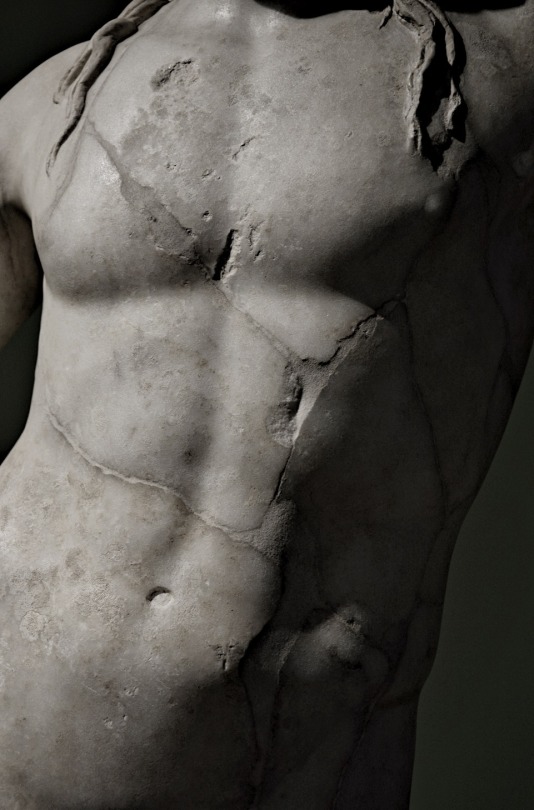Your Window to Inspiration: Seamlessly Browse Tumblr!
Ancient History - Blog Posts

New Banner Feature: Iberian Tribes: pre-Roman Iberia was awash with tribes of varying heritages, many of which gained Celtic layers, as the focus here on individual tribes often reveals.

The Iberian peninsula prior to the Carthaginian invasion and partial conquest was a melange of different tribal influences, with the Celtic influx being the most recent and most pervasive as this map shows.


Silver stater minted by Caulonia, Greek Southern Italy, circa 550-520 BC
from The Penn Museum

Jade and greenstone masks, Toltec, 100-500 AD
from The Penn Museum
fun fact, did you know that sharks existed before the North Star even formed? they also existed before TREES!

i love sharks

guys I found a photo of the eclipse from the bass pro shop pyramid
Honestly same, but this idea is as golden as menaleas' treasure
what if. spartans who don't like how smooth their skin is. who when out of their suits are disturbed by how smooth their skin is. the texture of the bodysuit that holds the gel layer is textured and that feels better.
all the injuries. all the hits they've taken. the pain they've endured. yet no scars to show for it. it feels wrong. their skin is far too smooth.
in a way, yes, their armor is their uniform. a second skin. but it's also what protects them - not entirely physically - but also mentally. when their body isn't as mangled as it seems to be, the ridges and grooves and texture of their armor and the bodysuit makes their bodies seem a little more accurate to how they feel they should be.

Rishi coffin for a commoner
Second Intermediate Period, Dynasty 17, 1580–1550 B.C. (find spot unknown)
In Dynasty 17 a new type of coffin appeared in Thebes: anthropoid, but no longer conceived solely as an inner coffin, and resting on its back because of a change in funerary customs whereby the deceased was no longer laid on one side. The anthropoid coffin was to become the burial container of choice among royals and commoners alike. The earliest examples are decorated in paint with a feather pattern, and so they are known by the Arabic word for “feathered,” rishi. Carved from local sycamore because the Thebans no longer had access to imported cedar, all rishi coffins, royal or private, show the deceased wearing the royal nemes headdress. This example was clearly a stock item made for a commoner, for a blank space was left for the owner’s name to be inserted at the end of the vertical inscription on the lid (a conventional offering formula for the dead).
Great vulture’s wings envelop the legs and lower abdomen. Even the top of the headdress is decorated with a feather pattern so that the deceased appears as a human-headed bird according to the concept of the ba, or mobile spirit. The ba could travel to any place and transform itself into anything it desired. The face on the coffin is painted black, not to represent the unknown owner’s race but to reinforce his identification with Osiris. The flesh of the god of death and resurrection was often shown as black or green to signify the black silt that fertilized the land with each year’s Nile flood, and the new life in the form of green vegetation that it brought forth. Painted on the chest is a pectoral, or chest ornament, in the form of a vulture and cobra, symbols of Nekhbet and Wadjyt, the tutelary goddesses of Upper and Lower Egypt.
Source: Museum of Fine Arts Boston

sketchbook time!
abandoned mosque at the feet of the Parthenon, now a cat haven. If you peek through the gate at the side, there's an overgrown space with scattered remains of the mosque, roman building blocks, and broken ancient greek columns (and goodness knows what else got thrown to the side) (Athens has so many ancient remains they don't know what to do with them) (they knock down a building so they can build a new one in its place, only to find it was built on historical remains and just leave a hole in the ground) (building the Metro was a nightmare, and every station has a mini museum of stuff they found there)
my toxic trait is thinking i could untie the gordian knot.
Sick of people not talking more about the state encouraged cuckolding in ancient Sparta, and I will die on this hill

“а ты гни свою линию”

I segni del tempo ©Tiziana Loiacono

